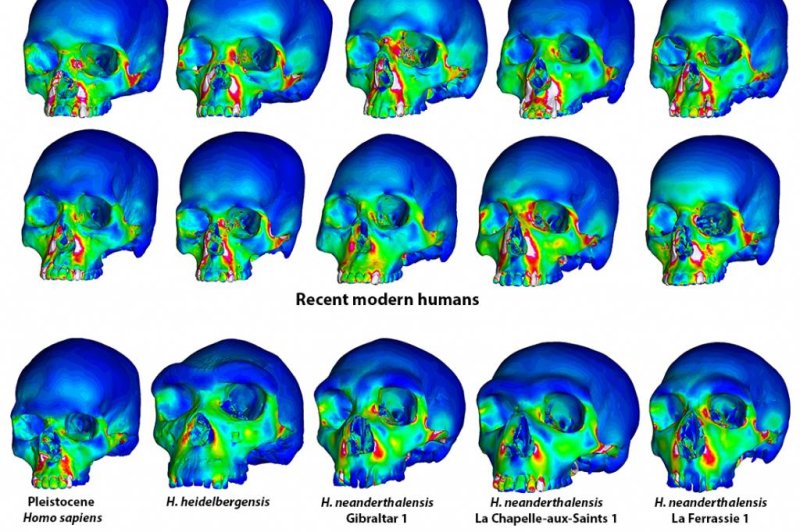New research suggests the facial structure of the Neanderthal helped the early humans take in larger volumes of oxygen. Photo by University of New England in Australia
April 4 (UPI) -- Why did Neanderthals have large, long, arching faces accented with big, broad noses and heavy brows?
New research -- including the first full reconstructions of Neanderthal skulls using 3D computer modeling -- suggests the Neanderthal's facial structure was designed to facilitate an extremely active lifestyle.
Models suggest the Neanderthal's large nose and wide naval passage allowed the early humans to carry large amounts of oxygen in and out of their lungs.
"In this respect, Neanderthal breathing was almost twice as effective as it is in we modern humans," lead researcher Stephen Wroe, a professor of zoology at the University of New England in Australia, said in a news release. "This means that Neanderthals could get far more oxygen into their system before having to resort to mouth breathing. Breathing through the nose is more efficient than mouth-breathing in terms of energy use."
Running down and killing large animals in cold Ice Age environs required Neanderthals to burn a lot of oxygen. A large noise and nasal cavity would have proved advantageous.
The mechanics of Neanderthal nose-breathing was also more adept at warming and humidifying cold air than their more primitive relative Homo heidelbergensis, but was inferior in both respects to the abilities of modern humans. Modern humans were also capable of generating an equally powerful bite, while expending less energy.
The new findings -- published this week in the journal Proceedings of the Royal Society B -- suggest the Neanderthal's great advantage was an ability to take in large volumes of oxygen.
"Neanderthals looked very different to us. They were shorter, far more robust and muscular than your average modern human, and, perhaps most obviously, they had huge noses and long mid-faces," Wroe said. "This projecting mid-face is a true Neanderthal novelty, a specialization which sets them apart, not just from us, but from their ancestors too."
"This characteristic, perhaps more than any other physical feature, separates Neanderthals from us," he said. "The evidence suggests that in life, Neanderthals lived very high-energy, extreme existences."
Early on, both anthropologists and the public equated the Neanderthals' unique appearance with a brutish disposition and stunted intellect, but recent studies suggest the early humans were very similar to the first Homo sapiens, with similar cultural and technological legacies.
Neanderthals buried their dead, created symbolic art, adorned themselves in body art and beads. Their diets and behavior were quite adaptable. It's no surprise then that Neanderthals and the first modern humans interbred.
"In short, distinguishing between 'us' and 'them,' at least on the basis of cultural behavior and mental ability, is becoming increasingly difficult, and may be impossible," Wroe said.















